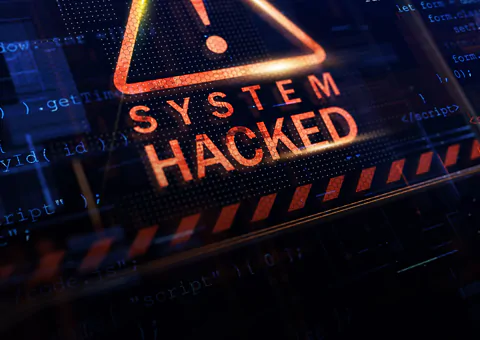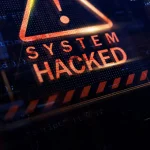Table of Contents
Introduction: Why Cybersecurity matters for Small Businesses
Small businesses are increasingly becoming targets for cyber threats, highlighting why cybersecurity matters to small business now more than ever. Unlike large corporations with extensive security teams, small businesses, or SMBs, often have limited resources, making them vulnerable to cyberattacks such as phishing, ransomware, and data breaches. With customer trust, financial stability, and operational continuity at stake, adopting proactive security measures is no longer optional—it’s essential.
Our cybersecurity geeks have put together a comprehensive guide to help small businesses navigate the treacherous waters of cybersecurity. This guide offers practical strategies to protect sensitive information, insights into legal compliance, and expert advice on how to safeguard your business—so you can sleep well at night, knowing your digital assets are secure.Small businesses are increasingly becoming targets for cyber threats, highlighting why cybersecurity matters to small business now more than ever. Unlike large corporations with extensive security teams, small businesses, or SMBs, often have limited resources, making them vulnerable to cyberattacks such as phishing, ransomware, and data breaches. With customer trust, financial stability, and operational continuity at stake, adopting proactive security measures is no longer optional—it’s essential.
The ever evolving threat landscape
Ah, the infamous Nigerian 419 scam—a classic that has stood the test of time! While email made it easier for scammers to reach victims globally, the roots of these frauds go way back. Before the internet took over, fraudsters relied on traditional mail, faxes, and even phone calls to pull off their schemes.
They would send letters claiming the recipient was the lucky heir to a forgotten fortune, had won a lottery they never entered, or had an urgent business opportunity requiring an upfront payment. The scammer would push for secrecy and pressure victims into sending funds, promising massive rewards in return. These scams thrived on the same psychological tactics as today—exploitation of trust, urgency, and greed.
Fax machines, once a staple of business communication, were also prime tools for fraudulent notices. Imagine receiving an official-looking document promising untold riches, only to realize (too late) that it was a scam!
The methods may have changed, but the schemes remain eerily similar.
Cybersecurity threats are evolving rapidly, becoming more sophisticated and widespread.
Here are some key concerns:
- Ransomware Attacks: Cybercriminals are increasingly using ransomware to encrypt data and demand payment for its release. The financial impact of cybercrime is expected to reach $10.5 trillion annually by 2025.
- Cloud Security Risks: As businesses move to cloud-based solutions, misconfigurations and AI-driven hacking attempts are making cloud environments more vulnerable.
- Phishing & Social Engineering: Attackers are using advanced techniques like device code phishing, which bypasses traditional security measures and even multi-factor authentication.
- State-Sponsored Cyber Attacks: Governments and critical infrastructure are facing threats from malicious state actors aiming to disrupt operations and steal sensitive data.
- AI-Powered Cybercrime: While AI enhances security, it also enables cybercriminals to automate attacks, making them harder to detect.
- Supply Chain Vulnerabilities: Many organizations struggle with securing their supply chains, making them susceptible to cyber threats.
Cybersecurity experts emphasize the importance of Zero Trust strategies, AI-based threat detection, and compliance with evolving regulations to mitigate risks. Staying informed and proactive is crucial in this ever-changing digital landscape.
Some SMB misconceptions about Cybersecurity
There are a lot of myths about cybersecurity that can make people and businesses more vulnerable. Here are some of the big ones:
- “Cybersecurity is just for IT people” – Nope! Keeping things secure is everyone’s job, from the CEO to the intern.
- “Small businesses don’t get hacked” – Actually, cybercriminals love targeting small businesses because they often have weaker security.
- “The more security tools, the safer you are” – Not necessarily. If security tools aren’t set up properly, they can create more problems than they solve.
- “Antivirus software will handle everything” – Antivirus helps, but it’s not a magic shield. Cyber threats are way more advanced now.
- “I’d never fall for a phishing scam!” – Phishing emails and fake websites are getting ridiculously convincing. Even tech-savvy people can get tricked.
How cyberattacks impact small business
The Australian Signals Directorate (ASD) has found that while the overall self-reported cost of cybercrime per incident for businesses has decreased by 8%, small businesses are bucking the trend—experiencing substantial financial losses that average $49,600 per incident, an 8% increase from the previous year.
Cyberattacks can take a serious toll on small businesses, leading to financial setbacks, reputational harm, and operational disruptions. Here are some of the main ways they can have an impact:
- Financial Losses – Small businesses can lose thousands of dollars per attack, whether through ransom payments, fraud, or recovery costs.
- Reputational Damage – Customers may lose trust in a business that suffers a data breach, leading to lost sales and difficulty attracting new clients.
- Operational Disruptions – Attacks like ransomware can shut down systems, preventing businesses from operating normally and causing delays in services.
- Legal and Compliance Issues – Businesses may be required to report breaches and comply with privacy laws, which can lead to fines or legal action if mishandled.
- Supply Chain Risks – If a small business is part of a larger supply chain, a cyberattack can impact other businesses that rely on its services.
Cybersecurity is becoming a top concern for small businesses, and taking proactive steps to protect against attacks is crucial.
Understanding the most common cyber threats
Phishing attacks and social engineering
Phishing attacks and social engineering are deceptive tactics cybercriminals use to manipulate people into revealing sensitive information or taking harmful actions.
Phishing Attacks
Phishing is a type of cyber attack where attackers impersonate legitimate entities—such as banks, online services, or even colleagues—to trick individuals into providing personal data, login credentials, or financial information. This often happens via:
- Emails: Fraudulent messages that appear to be from trusted sources, urging recipients to click malicious links or attachments. Here are some examples of Phishing attempts over the years.
- Fake Websites: Pages that mimic real sites to steal login details.
- SMS & Phone Calls: Messages or calls claiming to be from authorities or service providers, asking for sensitive information.
Social Engineering
Social engineering is a broader tactic where attackers exploit psychological manipulation rather than technical hacking.
This can include:
- Pretexting: Pretending to be someone trustworthy (e.g., tech support or law enforcement) to gain access to information.
- Baiting: Offering something enticing (e.g., free software or prizes) to trick victims into installing malware.
- Tailgating: Physically following someone into restricted areas to gain unauthorized access.
- Impersonation: Masquerading as a trusted figure to extract confidential data.
Both rely on human interaction rather than breaking into systems directly. Awareness and skepticism are key to avoiding these threats—always verify before clicking, sharing, or trusting unexpected messages! Let me know if you need real-world examples or tips to spot and prevent these attacks.
Malware and ransomware attacks
Malware is software created by hackers to infiltrate a system, often discreetly installing additional programs. This allows attackers to gain access not only to the infected workstation but also to probe the rest of the network for security vulnerabilities. Some malware even deploys ransomware, locking critical files until a ransom is paid.
Hackers can be patient, silently collecting data about devices and users on a network, waiting for the perfect moment to strike.
Malware is far from a new threat. In fact, the first known malware was the Creeper Virus, created in 1971. It was a self-replicating program designed to test the concept of computer viruses. Interestingly, this led to the creation of the first-ever antivirus program, called Reaper, which was designed to remove Creeper from infected devices.
Malware often spreads through phishing emails, malicious downloads, fake updates, compromised networks, and infected USB drives, allowing hackers to infiltrate systems and steal sensitive data. Keeping software updated, avoiding suspicious links, and using strong cybersecurity measures can help prevent infections.
Insider threats and human error
Insider threats come from individuals within an organization—employees, contractors, or partners—who misuse their access, whether intentionally (data theft, sabotage) or accidentally (weak security practices, negligence). These threats are hard to detect, making strict access controls, monitoring, and employee training essential for cybersecurity.
Credential theft and weak passwords
Weak passwords are a major cybersecurity vulnerability because they are easy for attackers to guess or crack, granting unauthorized access to personal accounts, business systems, or sensitive data. Hackers use techniques like brute force attacks (trying countless password combinations) or credential stuffing (using previously stolen login details) to break into accounts.
Credential theft occurs when cybercriminals steal usernames and passwords, often through phishing scams, malware infections, or data breaches. Once they have these credentials, attackers can access private accounts, impersonate users, and even sell login information on the dark web.
Failing to change default passwords on devices leaves them vulnerable to cyberattacks, as hackers can easily exploit common credentials to gain unauthorized access.
Essential Cybersecurity practices for Small Businesses
Implementing storng passwords and multi-factor authentication
Picking a difficult password
Good password management begins with creating complex, unique passwords that aren’t reused across different sites. A reliable strategy—such as incorporating favorite movies into passwords (e.g., !@#DayOfTheJack3l2025 or &&F0r3stGump!)—can enhance security while ensuring memorability. Longer passwords are always more secure.
Avoid writing passwords on desks, post-it notes, or any easily accessible place. If managing multiple passwords becomes overwhelming, a trusted password manager like Proton Pass—featured in a 2025 article by PC Mag on top-rated password managers—offers secure storage, provided you remember your master password.
To MFA or Not to MFA—That Is the Security Question
Multi-Factor Authentication (MFA) is a security measure that requires users to verify their identity using two or more authentication factors instead of just a password. This extra layer of security helps protect against unauthorized access, even if a password is compromised.
Authentication Factors Used in MFA:
- Something You Know – A password, PIN, or security question.
- Something You Have – A smartphone, security token, or authentication app.
- Something You Are – Biometric data like fingerprints, facial recognition, or retina scans.
By combining multiple factors, MFA significantly reduces the risk of cyber threats such as credential theft and unauthorized account access. Many services, like banking apps and workplace systems, now require MFA for enhanced security.
A word of caution: Mobile phones are frequently replaced due to loss, damage, or malfunction, making it essential to choose the right authenticator app. Xero, like many other business-critical platforms, relies on MFA for security. Losing a device without backed-up MFA associations can result in being locked out of crucial accounts.
To prevent this, regularly back up MFA credentials to ensure uninterrupted access to banking, online CRMs, and accounting software. Additionally, avoid storing all MFA methods—such as SMS, email, and authentication apps—on the same device. Instead, distribute MFA options across multiple devices, authentication techniques and communication methods, making unauthorized access significantly more difficult for attackers.
Biometric MFA methods like fingerprints, facial recognition, and voice scans can be convenient but are vulnerable to spoofing, so combining them with another factor enhances security.
Keeping software and system updated
Keeping systems and software updated is crucial for cybersecurity, as patches and updates fix vulnerabilities that hackers exploit to gain unauthorized access. Neglecting updates increases the risk of malware infections, data breaches, and system failures, potentially compromising sensitive information and business operations. So, remember to do you Windows or Mac upgrades as soon as possible.
It’s also good practice to replace your PC every 3–4 years to keep up with performance, security, and software requirements. For example, Windows 10 reaches End of Life (EOL) in October 2025, meaning it will no longer receive security updates, making older systems more vulnerable to cyber threats.
Securing Wi-Fi and other network connections
From a cybersecurity standpoint, securing network connections and Wi-Fi is essential. Always opt for the highest-grade encryption—such as WPA3—whenever possible. Avoid basic Wi-Fi setups that rely solely on a network name and password; instead, choose a router that integrates with RADIUS authentication, like JumpCloud. This ensures employees log in with individual usernames and passwords rather than a shared credential, preventing disgruntled former employees from retaining unauthorized access after leaving the organization.
Many ISP-provided modems offer only basic functionality and should be avoided whenever possible, as they lack advanced security features. Instead, routers like Mikrotik support Wi-Fi integration with RADIUS services, enabling businesses to enforce individual login credentials for employees and prevent unauthorized access—especially from former staff.
Cybersecurity employee training
Training your staff in cybersecurity awareness is crucial because human error is one of the leading causes of security breaches. Employees who understand threats like phishing, weak passwords, and social engineering are far less likely to fall victim to cyberattacks.
By fostering a security-conscious culture, businesses can prevent data breaches, protect sensitive information, and reduce financial and reputational risks. Regular training ensures staff recognize suspicious activity, follow best practices, and respond effectively to security incidents—strengthening the organization’s overall cyber defenses.
Employing a cyber-coach is an effective way to strengthen cybersecurity awareness, offering personalized guidance, real-world threat simulations, and ongoing training to keep employees vigilant. Engaging with a cyber-coach every four months—or even more frequently in high-risk industries—helps organisations stay ahead of evolving threats and reinforces best practices.
The Cyberwarden initiative, developed by the Council of Small Business Organisations of Australia (COSBOA), is a fantastic free resource for small businesses looking to educate their employees on cybersecurity awareness. It helps staff recognize threats, adopt best practices, and strengthen overall security defenses—making it a great starting point for businesses prioritizing cybersecurity.
Video credit: Sky News Australia – Cybersecurity for Small Businesses.
Outsourcing Cybersecurity: Smart strategy or risky move?
From a business owner’s perspective, outsourcing cybersecurity can be a strategic and cost-effective decision. Managing cybersecurity in-house requires specialized expertise, dedicated staff, and significant resources—something small businesses may struggle to maintain. By outsourcing to managed security providers, companies gain 24/7 monitoring, threat detection, and expert guidance without the burden of hiring and training internal teams.
However, outsourcing also comes with risks—such as reliance on third-party security, potential delays in responses, and data privacy concerns. Business owners must choose reputable, transparent, and well-reviewed cybersecurity partners to ensure strong protection while maintaining control over their data.
Cybersecurity Insurance: A safety net or unnecessary expense?
Cybersecurity insurance can be a valuable safeguard for small businesses, helping cover financial losses from cyber incidents like data breaches, ransomware attacks, and business interruptions. Since small businesses often lack the resources for advanced cybersecurity defenses, insurance can provide financial protection, legal support, and recovery assistance in the event of an attack.
Policies vary, but they typically cover incident response costs, data recovery, legal fees, and liability for customer data breaches. Given the rising threat of cybercrime, many experts recommend cybersecurity insurance as part of a comprehensive risk management strategy.
Cybersecurity insurance is a growing field, with many providers offering protection against digital threats—these four insurers represent just a sample of the options available to businesses and individuals.
Security.org provides critical reviews of top cyber insurance companies, offering insights into their coverage, benefits, and industry rankings to help organizations make informed decisions about their cyber protection.
Offering comprehensive cyber insurance for both individuals and businesses, with stolen funds replacement up to $250,000 and 24/7 breach response support.
Providing tailored cyber security support, with breach notification assistance for small businesses, expert cyber coaching for employees, and specialized plans for public institutions.
Emergence Insurance is Australia’s first standalone cyber insurer, offering dedicated protection for businesses and families. With all services managed by Australian-based employees, it provides comprehensive cyber coverage, risk education, and incident response, earning repeated recognition as a 5-Star Cyber insurer.
AIG stands out as the best data breach insurance provider, offering cyber insurance policies with limits far exceeding industry standards—up to $100 million, four times higher than its competitors.
With three specialized products—CyberEdge, WorldRisk, and EAGLE—AIG provides tailored protection to suit varying cybersecurity needs.
In conclusion
In today’s digital landscape, cybersecurity is no longer optional for small businesses—it’s essential. With evolving cyber threats, businesses must proactively safeguard their data, networks, and customer information by implementing best practices, security tools, and employee training. By prioritizing multi-layered security strategies, leveraging affordable cybersecurity solutions, and preparing incident response plans, small businesses can mitigate risks, strengthen defenses, and ensure long-term resilience against cyber threats. Staying informed, adapting to emerging security trends, and investing in the right protections will enable businesses to thrive securely in an ever-changing cyber environment.
In the coming months, we’ll expand our content on cybersecurity and its impact on small businesses in Australia. Future articles will explore the Essential 8 framework—a set of cybersecurity strategies developed by the Australian Cyber Security Centre (ACSC) to help organizations mitigate security risks.
These strategies include application control, patching, and multi-factor authentication, among others. We’ll provide insights on how small businesses can implement the framework effectively to enhance their security posture. Stay tuned for actionable guidance to help organizations navigate the evolving cybersecurity landscape.















